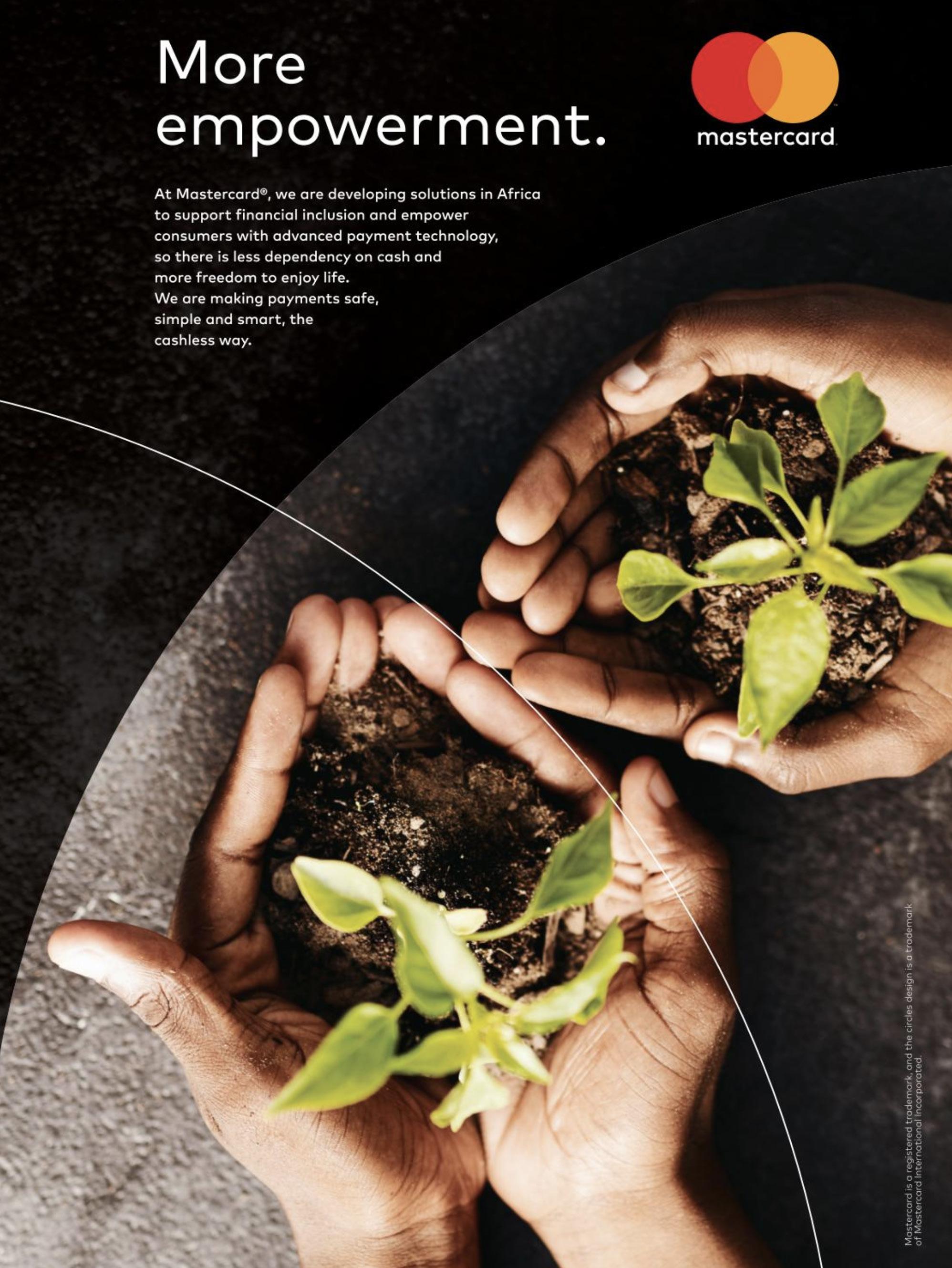








































































The final edition of the year is always a time to reflect. As the pandemic begins to feel like something that once happened, rather than something we are going through. The changes created still last. In the last year we have seen increased online banking and mobile app usage across Africa as digital banking becomes the norm. Recent evidence suggests that digital financial inclusion could significantly contribute to economic growth, reduce poverty and narrow income inequalities without necessarily causing adverse effects on financial stability given the appropriate regulatory framework. Financial inclusion still has a long way to go, but the digital solutions being provided have ensured that fewer people lack access to vital banking services.
In this edition we take a look at the digital transformation of Access Bank and the benefits this now provides for their customers, along with a look at how embedded finance is eclipsing the fintech competition. Mastercard also provides us with a fantastic insight into the relationship between innovation and financial inclusion.
We hope our readers enjoy this edition of Digital Banker Africa and we look forward to bringing you more in depth analysis of the digital banking sector across Africa in 2023.















As always send us your thoughts and provide us with any topics you would like to see in future editions. Happy reading!!




etaVerse. Cloud computing. Robotic process automation. 4IR Technologies. AI. A plethora of complicated terms and acronyms. The gateway to digitisation. A new way of life. Prior to the pandemic (BC – Before Covid), the world of online purchasing and door to door delivery was seen as a frivolous novelty, without much thought given to the semantics behind the entire supply and logistics chain involved in the process. Online shopping was a means to pass time, ‘shoot the breeze’ and buy often unnecessary ‘necessities’ which you most likely would not have purchased when doing physical shopping. Amazing how behaviour changes when online, let alone that your outfit is more often than not, pyjamas or track pants. After all, comfort when shopping is key, even if it is virtual.
The Covid pandemic shifted the world to embrace everything digital from ordering food and medication
to online school/university classes and Pilates sessions. Never has your heart leapt in joy to see your delivery and more so, the delivery person (a person! Seeing anyone, outside the members of your house, became a connecting lifeline to the outside world during lockdown). What was even more
fascinating was that the Internet held up: it didn’t slow down and it didn’t break. Pretty remarkable, considering that the whole world moved in its entirety to function online, demonstrating that life goes on despite stringent physical lockdown protocols.

Businesses, large and small, could never have anticipated what a catalyst the Covid pandemic would be to automation and digitisation of life in general, coupled with the sudden appearance of the Fourth Industrial revolution. An event that had been forecasted as a gentle unravel, but was impactful, as it was jarring.
Pragashani Reddy Head of Technology and Digital Enablement Standard Bankneed for personalisation of their experience. After all, no one wants to be a carbon copy of someone else and their life. A deep-seated need to be unique and different is inherent in individuals.
Customers change and evolve, as do their needs. Finicky at best in the physical world, customers are not buying products and services. If anything the pandemic has taught us, customers are on the axiom of buying convenience (strong emergence of instant gratification complex, a bit like wanting all elements of life to be as simple as a drive-thru), and time (time to live their lives, enjoy their families, sleep more and catch up on a TV series, especially cooking shows or exercise classes. We all remember how much banana bread got made during lockdown, and how everyone was either a self-proclaimed MasterChef or a new age Jane Fonda online fitness fanatic).
Fear of the unknown came to the fore when we realised that customers, us being customers ourselves, are wary of too much automation, with a preference for the phygital world ( blend of the physical and digital), and a high
Thinking back on the multitude of teams meetings, and waving at the end of each meeting, it was oddly comforting to reach out to colleagues, share experiences and speculate how long the lockdown would actually last. In line with this thinking, it is clear that there is alignment with customers that crave that personal engagement and direct contact, even if it is by phone, and not to be sold a new cellphone contract or offered another funeral policy. It opened up an avenue to shower attention onto customers and shape their needs and requirements into tangible outcomes or offerings that actually add value to their lives. After all, customers don’t know what they are missing till they find it, irrespective of product or service.
Customers seek simplicity in their access to information and online engagements. Too many tabs and clicks on a site can turn into a data treasure hunt, not the thought or plan anyone wakes up with (‘Oh, yipidee doo dah, lets see how many clicks it takes before I actually find the order button on a site’- not). Take the evolution of how easy social media is these
days. Algorithms have changed the way information is presented.. it started with clicks, moved to taps and scrolling and is now just on autoplay. Whether or not you admit it, the internet knows exactly how to draw you in, and keep you there. Further, how many people can truthfully say they steadfastly have resisted the temptation to click on pop-up ads? That alone can lead you down an expensive online purchase path with the multitude of sales and ‘special offers’. I am clearly suffering from experience. My kitchen cupboard bears testament to this, with shelves of unopened gadgets and musthaves, all of which was a ‘once in a lifetime offer’ at the time. But I have since cottoned on to the fact they run that same offer at least 6 times in the same month. I know this because I clicked. Everytime. In my defence, there were tweaks to the advert, some add ons and the opening music did change. Yes, the lady doth protest too much… Data engineering. Big Data. Data science. No matter how you describe it. It’s what we are all unconsciously generating. Business Intelligence (BI) can increase the overall profitability for various industries just by being in tune with their customers, through analysis of their life stage cycle, purchasing patterns and behavioural tendencies. Yes, humans are creatures of habit by nature and just tracking this can yield useful findings to shape apt offerings and services. It is the
baseline for historical, current and future trends. Not creepy at all that your every move is an analysis and will likely culminate in a’ limited time only’, ‘not to be missed ‘ offer.
I realised over the pandemic period that FOMO (fear of missing out) was overrated. I learnt to embrace JOMO (joy of missing out). The joy of my own company. The joy of truly experiencing online living (akin to Second Life from aeons ago when the internet first conceptualised us having a virtual life as well as a physical one). Being allowed to configure my online experience was liberating. I was thrilled that the pandemic forced various industries to personalise the online customer experience. I could choose if and when I wanted to receive mobile alerts (after all our cellphones are like a body part, we don’t go anywhere without it) and even choose my medium and platform of preference to engage with key service providers. Appointment reminders, renewal notices, medication refills – the list of convenient automation abounds!
I must admit that I never thought gamification of sites would have such an appeal. Never could I have imagined that leveraging loyalty points, levels, badges, challenges, rewards and leaderboards could increase customer engagement, prompt purchase behaviour and impart useful knowledge through short animated videos and tutorials. An accelerator for innovation! One thing that always tickles me though is the security
question of “Are you a robot?’
Ironic since the question is posed from a robot itself.
The lockdown period did highlight the darker side of the internet emerging, those using the internet for nefarious purposes such as fake romances (online dating is a grim place where ‘she’ is actually a ‘he’ or they just want ungodly sums of
money transferred to them), online gambling (where you are convinced the next big win will make you a carefree billionaire), online inheritance claims (why on earth would you in SA, be a beneficiary of an unknown person in Scotland?). Never has the internet been so eye opening yet educational at the same time.
Ultimately as humans, we personify everything: assets and even experiences. The pandemic was a period of living in ‘pause’. I thought it only fitting to end off my subsequent reflections on life in general for you to mull over and potentially internalise:
Live each moment as if it were your last, but learn like you were to live forever (Gandhi)
Travel - for the world is a book and if you never travel you only read one page (Yes, I do know the borders only opened fairly recently)
Be careful who you trust. Salt and sugar look the same. Converted into the lingo of today, choose your Facebook friends, Linkedin connections and Instagram followers carefully. As they are not your friends, but in actual fact, surveillance cameras.
Don’t climb the mountain so others can see you. Do it so you can see the world.
Authenticity - be the same person privately, publicly and personally (social media life (and all its filters is not real life).
Begin anywhere. Life is a monopoly . You can go back to start anytime
The truth is that technology can be likened to education. It’s always there but can never be forced. Teachers can impart information and make suggestions, but they are like signposts—they can only by example and precept point out the way. A sign-post is of no earthly use unless the person who consults it wants to go somewhere. — Robert Shafer, 1921

In order for the emerging economies of Africa to sustain their development needs, domestic revenue mobilisation is essential.
James Claude, CEO of Global Voice Group recently spoke with Digital Banker Africa on the role of technology in boosting domestic revenue mobilisation in Africa.
CEO of Global Voice Group (GVG)

The World Bank recommends a taxto-GDP ratio of 15%. On average, Africa lags behind other emerging economic regions such as the AsiaPacific region (21%) and the Latin America and Caribbean economies (22.9%), averaging 16.6% according to the Organisation for Economic Co-operation and Development (OECD) Revenue Statistics in Africa 2021 report. Only 15 countries in Africa are above the recommended World Bank ratio and what is even more surprising is that the nonresource rich countries lead the way in terms of high tax-to-GDP ratios – Morocco, Seychelles, South Africa and Tunisia all have tax-to-GDP ratios above 26%. That is in stark contrast to Nigeria, the Democratic Republic of Congo, Congo and Niger which all average below 10.5%.
Given the massive demands of developing African countries, this low level of tax collection jeopardises the African continent’s socio-economic developmental progress. Low taxes generated and collected by these African countries are partly attributable to the underdevelopment of African countries’ tax management systems. These inefficiencies are impeding efficient tax collection and management.
The need to improve the tax-toGDP ratio is evident with some African countries already making
deliberate efforts to achieve this. For example, Ghana introduced new tax measures in their 2022 budget that according to their finance minister will raise their tax-to-GDP ratio from 12% to 16.5%.
There are several challenges that limit the effective collection of domestic taxes by African governments. One of the largest hindrances is the size of the informal economy. According to the International Labour Organisation (ILO), 2 billion people work in the informal economy globally, and in Africa, 85.5% of the population does. The informal economy operates mainly on cash transactions and possesses very little in terms of a paper trail or records that can be audited to effectively seal any revenue leakage gaps. Many businesses in the informal sector also do not have formal registration as companies, and are not registered with tax agencies, making it challenging to track the revenues generated by these businesses and tax them.
Tax evasion is a major challenge too. For example, from the total population of slightly above 47.6 million Kenyans, Kenya Revenue Authority (KRA) reports that about 5.5 million taxpayers filed their returns in 2021. The number of registered taxpayers using iTax –
the authority’s tax portal – stands at 6.1 million. This number is expected to grow to 8.2 million by 2023. That number is still quite low compared to the number of citizens between the ages of 25 and 49 (16.7 million), who would make up the largest chunk of the tax base.
There are many African governments that have been eagerly adopting emerging digital technologies to address these tax collection and management challenges in the last decade. These smart technologies are meant to address these difficulties and streamline tax collection and management systems to positively impact local tax revenue generation and management. For example, Rwanda and South Africa have developed and implemented digital systems such as point of sale devices (POS) and e-tax filing systems to simplify the tax remittance systems and provide greater convenience for taxpayers.
Tunisia has also adopted technology to boost domestic revenue mobilisations and uses an online filing and payment system that minimises the frequency of payments. This is done promptly, minimising the burden on taxpayers and potentially discouraging tax evasion. Reports have demonstrated that tax collection and payments reforms have decreased tax evasion and
What is the state of the tax-to-GDP ratio of African countries?
expanded the overall tax revenue collection. Tunisia’s tax-to-GDP ratio as a result has grown from 12.3% in 2008 to 34.2% in 2021.
The growth in mobile money transactions, while positive for financial inclusion and economic growth, also presents a possible opportunity for the government to increase tax income. Digital payment systems are currently largely untaxed, and while the industry grows, several government tax revenue sources are experiencing a decline in growth.
What gaps in policy need to be addressed for tech to effectively boost domestic revenue mobilisation?
Policy is central to ensuring the effectiveness of any initiatives or measures put in place, including those around domestic revenue mobilisation and technology. Technology has become central to the economies of many African countries, with the growth of mobile money, e-commerce, digital payments and increased internet penetration. However, as stated above, many of these technology backed systems remain largely untaxed. This is largely due to the large informal economy.
Addressing the regulatory gap requires an appropriate regulatory framework. These frameworks set the basis for tax compliance and effective revenue assurance.
Policy makers are therefore called to promote the right regulatory frameworks that enable the implementation of technologies to improve oversight within the digital ecosystems, where tax shortfalls are prominent. The right systems can improve visibility on revenue leakage enabling improved domestic revenue assurance.
Some African countries, like Rwanda and Ghana, have embraced digitalisation and can be legitimately described as pioneers when it comes to the adoption of regulation technology. The telecom regulators of both countries, RURA and NCA, implemented some of GVG’s regtech solutions, which allowed them not only to enhance the governance of the telecom and digital financial services, thanks to the resulting improvement in their decision-making capacities but also to secure additional revenue from these essential sectors.
The digital transactions ecosystem is experiencing an unparalleled growth in the African continent. However, the growth of this strategic driver for the economies is not reflected accordingly in the GDPs’. When this happens, it’s a clear indicator that the existing policies are insufficient to oversee these growing ecosystems and ineffective in channelling their growth in the real economy. In response to this reality, many governments in Africa are drafting policies to tax digital transactions.
Ghana’s e-levy, in force since May, sets a 1.5% tax on most electronic money transfers and Cameroon brought in a similar charge in January. These are examples of policies aimed precisely at filling budget holes and driving domestic revenue mobilisation, using key economic sectors that generate billions in revenues and remain highly undertaxed.
Technology has the potential to solve the challenges faced by African countries in domestic revenue mobilisation, but it is a double-edged sword. Without the right frameworks and policies being put in place, the potential benefits of implementing technology would not be felt or fully materialise. Tax authorities and governments need to work together to identify impactful solutions and create the required enabling environment for these technology backed solutions to thrive. This is a conversation that must be had from an industry level, with all stakeholders. As such, we held a webinar on this topic with two experts at the start of November 2022 to discuss ways that technology can be applied to solve the dilemma of domestic revenue mobilisation: We encourage everyone who has an interest in the topic to listen to the webinar on the GVG website.





In May 2020 the Zimbabwean Minister of Finance Mthuli Ncube promulgated Statutory Instrument 80 of 2020, also to be cited as Banking (Money Transmission, Mobile Banking and Mobile Money Interoperability) Regulations, 2020. A statutory instrument is a secondary piece of legislation which enables an Act of Parliament to have greater effect, but without itself having to go through a parliamentary legislative process. In this case, SI 80/2020 was enacted by the Minister of Finance and Economic
Development in terms of section 81 of the Banking Act (Chapter 24:20) which is the primary law (Statutory Instrument 80 of 2020). The salient aspects of SI80/2020 was the effective transfer of mobile money licensing to the RBZ, enforcement of interoperability for all mobile banking and any money transmission service. After SI80/2020 was promulgated mobile money agents were discontinued and Zimswitch was nominated as the national switch through which all operators are expected to integrate their payment services.
Critically, money would now flow freely across mobile money wallets as well as banking accounts, in the same way banks have enabled inter-account transfers for generations. Banks which have been pursuing the voluntary enablement of this integration were relieved. Through the Bankers Association of Zimbabwe, the plea for interoperability enforcement by banks had gone on for over seven years, even reaching the Competition and Tariffs Commission (CTC). After the bankers’ plea, the CTC
commissioned a market study which going by the action of the RBZ seems to have established the need to enforce interoperability.
Mugwagwa Managing Director Xarani Fintech www.xarani.comThe long-standing interoperability framework for inter-bank payments is a compelling precedent for the financial services sector. The introduction of bank and mobile money interoperability in 2020 also accelerated instant payments, an area that emerging or African markets seem to be ahead compared to Europe and the United States. The timing of SI80/2020 could not have been better, as it also helped ease the risk of Covid19 transmission. The new payment
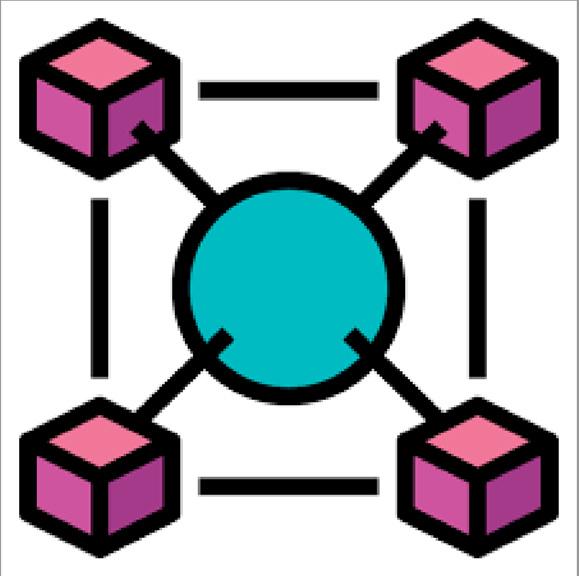



options supported the fastgrowing e-commerce businesses that sought to continue trading whilst mitigating the risk of virus transmission.
Since mobile money was introduced in the Zimbabwean market around 2010, the regulation and supervision thereof was a largely joint affair between the Reserve Bank of Zimbabwe and the telecommunications regulator, The Postal and Telecommunications Regulatory Authority of Zimbabwe (POTRAZ). This was mainly because at the outset, the applicants coming into the market almost exclusively were mobile network operators who happened to fall under the purview of POTRAZ. By virtue of them crossing into the adjacent financial services industry, it was inevitable that the central bank had to be involved to authorise or ratify their participation. To its credit, the RBZ embraced the ‘test and learn’ approach to regulation that allowed mobile money to take off exponentially for over a decade, bringing millions into the financial services ecosystem. More importantly, mobile money has improved the efforts to improve financial inclusion in Africa and other developing economies of the world.
As the financial services market share of mobile money operators grew in Zimbabwe, particularly that of Econet, banks felt the integration of mobile money operations ought to be fair to both parties to allow a fair flow of funds. Being




in control of the mobile money infrastructure, mobile money operators unfortunately did not feel this was urgent, and more funds continued to flow from the banks into the mobile money system. The cash-lite monetary policy pursued by the central bank after the hyperinflationary period to 2009, saw an exponential growth of electronic payments.
Deepening (Africa) asserts that interoperability is a key infrastructure component that enables the fintech ecosystem to flourish. This view however is not readily embraced by ecosystem players who are in a dominant position, as they view opening up the payment network as needlessly surrendering competitive advantage. Understandably they invested significant amounts of capital to develop the distribution
network, especially the last mile of agents which commercial banks have not been able to activate due to model viability challenges. Those with extensive distribution networks equate this to giving competition a free ride.
The volume of mobile transactions fell by 7% in 2021 after the introduction of the new regulations in May 2020. The volumes further fell by 26.8% in 2021 to 1.2 billion transactions, indicating the significant impact that the statutory instrument had on the usage of the mobile channel. The most common view seems to be that the subsequent discontinuation of the cash-in cash-out agents had a huge impact on the volume of transactions. Notably, the cash-in cash-out agents appeared to have accounted for most of the cash circulating in the economy, since cash disbursed
from the banks never seemed to return to the formal system. Instead, cash appeared to be bountiful in the street and with mobile money agents, hence the regulator’s argument that they were fuelling the foreign exchange parallel market.
In the final analysis, SI 80/2020 essentially pulled down the curtain on the nurturing phase of the ‘testand-learn’ phase that allowed the financial inclusion driver that is mobile money to get off the ground. The biggest fintech innovation in Africa was ready to hold its own against institutions that have been in existence for hundreds of years, banks. Zimbabwe’s formal banking trends appear to corroborate the view that mobile money accelerates the adoption or access of formal bank products. According to a 2020 Finmark report on Zimbabwe, there was a 480% growth in the number of transactional accounts, from 1.5 million in December 2016 to 8.6 million in December 2020. This growth in the number of transactional accounts is attributable to the impact of mobile money, supported by the aggressive cash-lite policies of the RBZ. It remains to be seen if mobile money innovation will sustain its momentum from the 2010s under the more intense regulatory regime of the RBZ. The next challenge is to enable financial inclusion beyond payments, which by and large has been significantly advanced by the mandatory interoperability introduced by the Zimbabwean authorities.



In the last 15 or so years, mobile phone technology has been spreading rapidly around the globe. By the end of 2020, an estimated 495 million people had subscribed to mobile services in Sub-Saharan Africa, representing 46% of the region’s population.

According to a report by GSMA called The Mobile Economy SubSaharan Africa, over the period to 2025, 4G adoption in SubSaharan Africa will double to 28%, compared to a global average of 57%. By the end of 2025, 5G will account for 3% of the total mobile connections in the region.
As economies recover from the effects of the pandemic and restrictions ease, mobile technology will become even more integral to how people live and how businesses operate. It will enable new digital solutions for small and large enterprises and support consumers’ growing use of online channels.
Smartphones will account for almost two-thirds of connections in Sub-Saharan Africa by 2025. Kenya is currently in the top three smartphone connected markets in Sub-Saharan Africa with a whopping 55% of its population being smartphone holders. This growth is fuelled by digital
platforms in financial services and the availability of more affordable devices.
The efficiency and growth of these digital connections, continue to have diverse and multiple effects on our livelihoods. Key among them is the significant growth of digital payments and lending. Leveraging on the evolution of Telco and
technology, digital financial services distribution continues to expand its reach. Telcos and their information are gaining prominence in determining credit scoring and decisioning.
George Njuguna Director, Information Technology (CIO)The availability of Digital Lending Solutions goes beyond just
helping people in times of crisis, it addresses the global challenge of financial inclusion. In the past, people without access to formal banking or the unbanked
in Africa could not access loans, investments, formal savings and credit services. This forced them to transact exclusively in cash, have no safe way to save and invest their money, and rely on informal lenders and personal networks for credit. Even those with access continued to pay dearly for a limited range of products, especially without security, because they worked in the informal sector.

Today, lending in the form of mobile phone loans forms a big part of the financial ecosystem especially to the unbanked and informal sectors. The number of mobile loan applications continues to increase, and the economy keeps gaining from it. Success in financial inclusion entails reaching individuals and small businesses with products that go beyond payments that can significantly improve their financial lives. Mobile money and loans have become the gateway into huge, largely untouched markets.
In Kenya, financial inclusion stood at less than 26% before the introduction of M-PESA as a mobile money transfer platform. Currently, this figure stands at above 80%. This is a significant growth only 15 years after the introduction of the service. Today, Kenya is 3rd in Africa after South Africa and Mauritius in financial inclusivity. This shows the power of mobile money in ensuring everyone is empowered financially.
It is impossible to speak of mobile money in Kenya and Africa without mentioning M-PESA. Beyond the success numbers, there is a better way to look at this service, especially into the future.
M-PESA continues to power approximately 46 loans per second, ensuring real-time credit access and enhancing businesses’ growth and expansion. This is mainly due to partnerships and integrating the payment service with lenders and banks. Partnerships have fueled the growth of payments, currently standing at over 400,000 organisations accepting
Digital connectivity continues to play a vital role in transforming and improving lives, as it opens the door to employment, financial opportunities, and inclusion for people across the world. As more and more people worldwide get connected to phone services, regions experience growth as it becomes easier for information to flow and citizens to access banking and other essential services. This is probably one of the keys to inclusive growth globally, as is apparent in Kenya. The growth
payments via M-PESA.
Beyond that, there are over 40,000 developers in Kenya integrating M-PESA into businesses, pushing the growth of digital payments. M-PESA is no longer a mobile payment platform but a tool for innovators to build on. With the spread of mobile money, young and creative guys have a starting point for all their fintech products. The M-PESA app is open to creators in Africa to ensure that they have a starting point. Today, more and more mini-apps are added to the M-PESA super
app to drive a digital marketplace that brings together buyers and sellers seamlessly. Super apps are just one of the ways we leverage technology to offer Over the Top (OTT) financial services and open up the ecosystem.
Some of the key pillars for payments are platforms like M-PESA, organisations like banks and telcos, and consumers who ought to benefit. The recent launch of M-PESA interoperability through a joint effort of the major telcos in Kenya showcases the impact technology would have if it is not limited to one company or product, but rather allowing it to be agnostic.
of mobile penetration in Kenya has led to increased employment and income generation, which manifests as more people get access to phones. Organisations such as Safaricom realised this and came up with Device Financing proposition dubbed “Lipa Mdogo Mdogo” that enables Kenyans to own a smartphone for as little as Kshs 20 a day. According to GSMA, the gap between connectivity and usage stands at 3.4 billion across the globe. Some of the barriers are literacy, content and affordability of devices. Device Financing is only one avenue to address the gap. There is need for stakeholders to come up with more solutions
like local manufacturing so as to close the digital divide and grow smartphone use to more than 70%, like in many parts of South East Asia. Government, Telcos and Financial institutions will all benefit from digitsation of the citizenry.
If Africa is to become a world leader in technology and commerce, it will require all stakeholders to drive digital and financial inclusion. M-Pesa and Device Financing are two examples of how Safaricom is taking on the dual challenge. More can be done if we come together towards a common purpose of making Africa the home of Fintech and hotbed of Innovation.
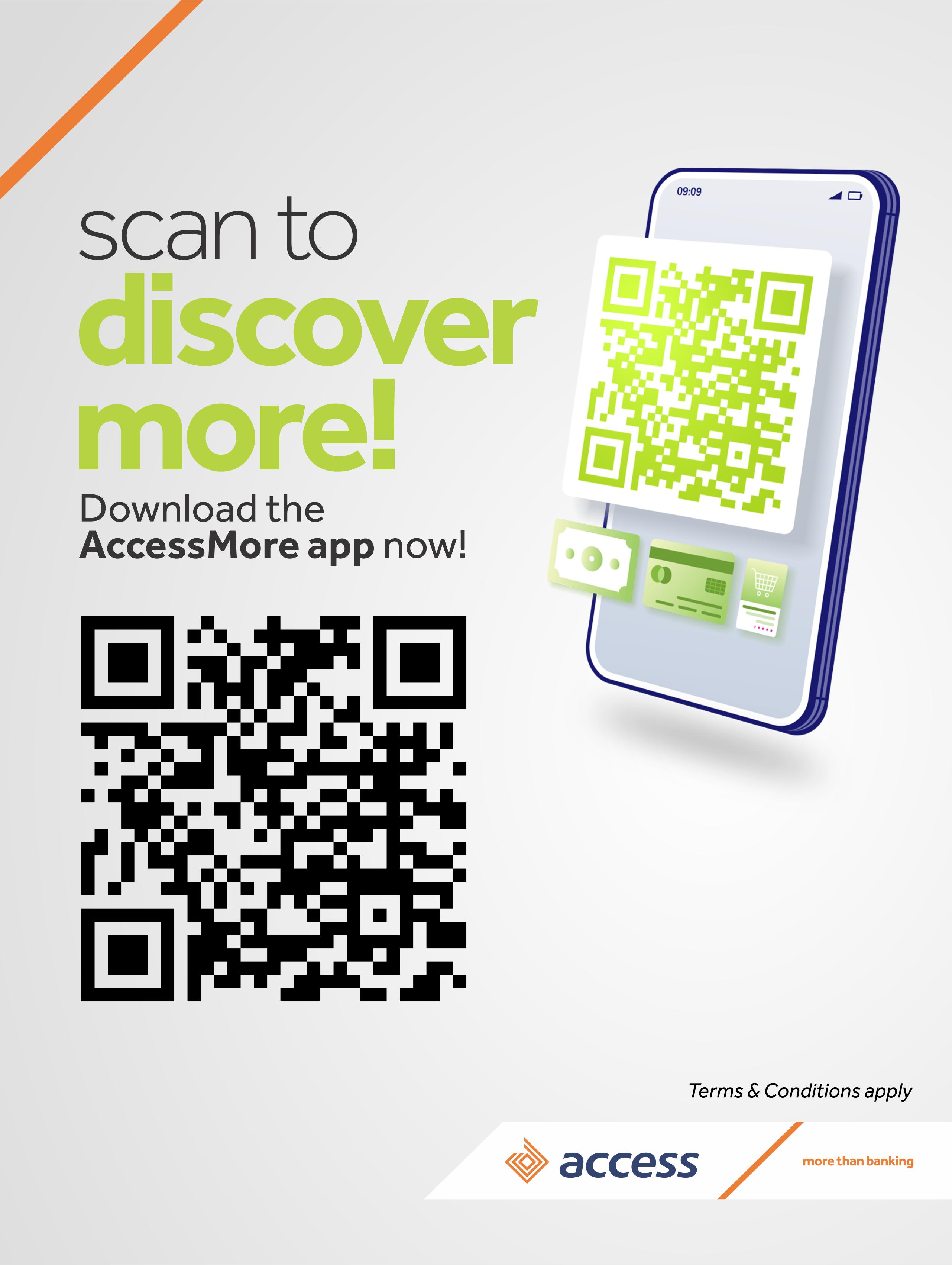

these advanced digital technologies allow for financial processes to be completed with minimal human intervention.
Artificial intelligence, robotic process automation, and other software solutions have made automation of business processes such as invoice payments, account reconciliation, management of online accounts, online assistants, and payroll possible so humans can dedicate time to more productive tasks. Digital innovations have undeniably aided in the enhancement of customer experience. For example, big data allows for aspects of a customer’s profile and account to be accessible. Also, customers can seamlessly conduct transactions without having to visit a physical bank. The speed and ease at which customers perform tasks has also been increased.
When compared with other industries, the financial services sector has been relatively slow in its adoption of digital innovation. For most financial service providers, digital transformation has been slowed down by the costs of shifting away from conservative practices. However, customers’ needs are ever-changing, and there is a need for financial service providers to meet these needs. This factor is responsible for the increased attention and spending on digital transformation.
Roosevelt Ogbonna FCA, CFA Chief Executive Director, Access Bank PLC
With increased digitisation, there are associated risks. Therefore, banking organisations have a heavy responsibility for security. It’s crucial to ensure the safety of the company’s information and assets and those of its internal and external customers. As a result of widespread threats to the financial system, numerous digital solutions and safeguards have been developed to counteract them.

The finance sector has undergone digital transformation in terms of the widespread adoption of digital banking, which has replaced traditional banking practices. Through the power of technology, the finance sector is now at the forefront of digitalisation and innovation.
The benefits of this digital transformation journey are numerous. The opportunities abound exist for individuals, small businesses, and large corporations including banks. Digital transformation gives organisations access to emerging technologies such as blockchain, data science and analytics, complex algorithms, Artificial Intelligence and Machine Learning, which facilitate industry-altering growth. In addition,
The customer base is an essential component of every business, particularly financial services. Customer satisfaction can be increased by further maximising the potential of digital innovations. Thanks to digital solutions, there is less constraint in communicating, collaborating, and transacting with consumers. Digital solutions have reduced banking institutions’ issues with location and time. Inside and outside physical offices, it is now possible to connect with customers and perform necessary operations 24 hours a day, including the weekends and holidays. The transition from a rigid banking model to branchless and on-the-go banking models shows the usage of more flexible processes.
The COVID-19 pandemic affected every facet of life, evidenced by the efforts to settle into normal life postpandemic. Before the pandemic, the standard order of business in financial industries involved physical interaction, which COVID-19 disrupted. As the world watched, only a few financial service providers could get past the limitations and tribulations brought about by the pandemic. Through digital solutions and a mandate as a digitally-led international organisation, Access Bank was able to soar above the challenges of the pandemic.
The pandemic opened up the realisation that a lot could be done outside the walls of physical buildings and offices. This factor prompted many financial institutions to begin their digital transformation journey, and to accelerate the journey for those who have already started. Access Bank has tested and incorporated digital tools in every business area. While the physical operations are still important, there has been a clear adaptation to digital processes and more intensive use of technology which promotes collaboration and innovation. In a bid to think ahead, the bank has also invested in emerging technologies and other ground-breaking tools and models, to enable business operations to be carried out in new, flexible, and improved ways.
In 2022, Access Bank has further transformed existing digital applications and services. The bank has also developed new digital products and services, in line with our commitment to maintain our top position as a digitally-led financial provider in Africa and the world. We achieve this by staying abreast of the needs of our clients and the market, which are constantly changing.
Access More is the bank’s mobile banking super application, unlike any other banking app on the market. By incorporating state-of-the-art features
for modern living as well as analytical tools and technologies, Access More has given our 40 millionplus customers the best mobile banking experience possible. We have also deployed Access More to our African subsidiaries such as Zambia, Kenya, South Africa, Sierra Leone, Guinea, Rwanda, The Gambia, Cameroon, and Ghana. The Super App is constantly being updated and improved upon, in order to increase ease, speed, convenience and value for our large customer base. Below are example of some additional features made this year alone:
•
•
•
•
•
•
Being a digitally-led bank, we developed Access Africa, Africa’s Payment Gateway, a funds transfer product intended to streamline international payments made by Person-to-Person (P2P), Business-to-Business (B2B), Person to Business (P2B), Government to Person (G2P), and any other payment activities/flows. In addition to instant transfer to nations where we have subsidiaries, we have expanded our reach to roughly 15 nations, including the UK, France, Germany, China, Benin, and others, by utilising its wide partner network. By supporting fast Pan-African payments and enabling cross-continental transfers, this promotes borderless digital interaction across Africa.
In a bid to make transactions more streamlined, Access Bank designed and developed a biometric payment solution called FacePay. As the name suggests, FacePay uses AI and ML to carry out transactions using facial recognition. With FacePay, customers at physical branches and merchant locations no longer need to wait in line for service. This digital service allows customers to transact with an innovative face authentication mechanism in the form of a selfie.
Access Bank also provides Business to Business (B2B) digital solutions. Our leading initiative in this realm is known as PrimusPlus, a web application that simplifies cash and cheque payments across multiple banks for corporate users. The ability of users to monitor their accounts and make changes in real time over the internet is a distinctive feature of this product. These corporate users can also access single or bulk local and international payments, forex biddings, account statements, customs duty payments, and other financial services.
Tamada is another digital product that exemplifies our commitment to simplifying financial transactions wherever possible through the implementation of digital solutions. Tamada is an online digital assistant (chatbot) built on AI technology. Tamada supports basic banking activities such as bills payment, account opening and other activities which are within the customer’s reach. In addition to the basic capabilities, Tamada also offers more sophisticated functions such as live conversations, live traffic updates, news, weather forecasts, and more.
Access bank is still rapidly improving its digital solutions as the future of digital banking transformation is constantly evolving. The Africa Fintech Foundry (AFF) is one of Access Bank’s initiatives to maximise the opportunities of digital technology and contribute to the development of FinTech across Africa.
AFF fosters and accelerates the development of FinTech startups in Africa through the Foundry’s renowned annual Accelerator Program. The Foundry has a key mandate to assist start-ups to scale, and to reach a level of maturity where they can provide market-ready solutions that will increase the availability of financial services for the continent’s economically marginalised populations. AFF is an industry leader in innovation, financial technology, and entrepreneurship.
AFF boasts of industry leading digital products, most of which have been implemented and some still in the
pipeline. An example is Fast Pay, a digital solution that creates a novel, convenient, and cutting-edge method of making digital payments possible for all clients by employing Unique Code Generation Technology in the form of a contactless digital payment solution. The Supply Chain Platform is an automated platform designed by AFF and Access Bank to enable corporate customers to manage their vendors and supply chains, keeping tabs on invoices, controlling the company’s payables and working capital. The Bank To Broker project is another initiative of AFF, however going beyond FinTech. This solution involves partnership with investment providers to bring the capital market to customers’ fingertips. To make it easier, the digitalised investment opportunities have been integrated on the Access More Super App. AFF also organises tech events to contribute to the wider community and encourage new startups. Examples are the Women In Tech conference, Ecosystem Roundtable and many more. Finally, AFF partnered with the Central Bank of Nigeria (CBN) in August 2022, to deliver the first ever E-Naira Hackathon, based on Africa’s first Central Bank Digital Currency launched last year by the CBN.
Access Bank has embraced digital innovation because of its commitment to continuously seek innovative methods to meet the needs of consumers. As an organisation, we are dedicated to positively impacting and transforming the banking sector in Nigeria, Africa and beyond. We have only scratched the surface of what can be done with digital technology. Moreover, as we develop and grow, we expose and deploy more disruptive digital solutions. We are excited to share the digital projects in the pipeline, which are being refined and getting ready for market.
Our goal is to improve upon our prior successes by developing ever more creative approaches to serving our clients’ ever-changing requirements. We are on a mission to provide unrivalled value to our existing clientele and to attract new ones by building on our success by increasing the scope of our products and platforms and making extensive use of technologies like Artificial Intelligence, Machine Learning, Robotic Process Automation, Data Science and Analytics.

In the last decade, we have seen incredible advances in digital banking and payments across Africa. Foreign direct investment into the tech startup ecosystem has grown rapidly to over $5.1 billion in 2021 and Fintech firms have built innovative digital payment solutions with some achieving unicorn status. Banks have not been left out in the digitisation revolution and their customers are now spoiled with choices of mobile banking applications.
At Ecobank, our digital transformation is a key pillar in our Roadmap to Leadership strategy where we aim to quickly scale up our customer base, leveraging digital and agency banking channels. In late October 2016, we launched Ecobank Mobile, a unified mobile banking app across all 33 countries in Africa where we operate. The app includes state-of-the-art features including digital account opening, virtual card issuance, e-tokens for cardless withdrawals, QR merchant payments, domestic, regional, and international funds transfers plus a lot more.
Between 2016 and 2021, we saw the number of customers grow from 10 million to over 32 million. Last year our mobile banking users increased to 13.9 million and we processed $5 billion of
transactions via this channel alone. We expanded our agency banking footprint to 109,748 Xpress Point agents who processed $3.1 billion in transactions.
A pan African digital transformation requires attention to several key drivers. For example,


clear data strategy, strong customer support leveraging both human and artificial intelligence, and a shift in marketing towards
digital channels. While we are still on our digital transformation journey at Ecobank, some key learnings can be highlighted:
Cash remains king and its reign is not going to end anytime soon. According to McKinsey & Company, the use of cash will reduce to 79% of transactions in Africa by 2025 while electronic transactions will continue to grow. Cash has hidden costs which unbanked consumers are often oblivious to such as the need to travel longer distances to access financial services and higher lending premiums. There is also the risk of theft without any trace. A concerted effort including marketing incentives, education and consistent communication is required to get customers to see the benefits of switching away from cash and convert to digital payments.
Digital transformation needs to include agency banking solutions that enable consumers to digitise cash conveniently, conducting transactions like cash deposits and withdrawals, in the neighbourhoods where they live or work. We hired a dedicated team in each country where we offer the service, to build our Xpress Point agency banking network with full responsibility for recruiting, onboarding, and training agents and ensuring that their locations
were adequately branded for market visibility. These teams also need to ensure compliance with local regulations which vary from country to country. We ended 2021 with almost 110,000 agent locations across the continent. Digitising cash alone does not resolve all payments challenges. Interoperability between banks, mobile money and Fintech wallets is crucial for the population to transact as seamlessly as possible with cash.
The GSMA estimated 495 million active subscribers to mobile services in sub–Saharan Africa in 2020. The ubiquity of mobile devices makes digital financial services inevitable.
The Ecobank Mobile App aims to serve customers better from the comfort of their mobile devices. Since consumers primarily use banking apps for funds transfers, we provided options to send money locally (intra and interbank), regionally across the 33 countries where Ecobank operates via our proprietary money transfer service, Rapidtransfer, and internationally via SWIFT. Our Xpress Cash (e-token redeemable at Ecobank ATMs and agent locations) provides an option for sending money to individuals who do not have bank accounts.
Mobile apps are very versatile, however, not everyone has a smartphone or can afford a data plan, and internet penetration varies by country. When seeking to serve customers at scale in Africa, the USSD channel is quite important. Telco-led mobile money is very popular in sub-Saharan Africa with about $700 billion in transactions processed last year and this was largely built on USSD, hence the population is familiar with the channel.
It is important to liaise with regulators when digitising processes and launching innovative products and services. Local regulators must have comfort with KYC, AML/CFT, foreign currency controls and other risk factors important to the nation. While there are some common themes amongst regulators on the continent, as they seek to protect their countries and citizens from fraud and losses, the rules vary by jurisdiction.
Aligned with governments on the need to expand financial inclusion, we launched the Ecobank Xpress Account, a digital bank account opened and operated exclusively on mobile devices with no paperwork, no minimum balance requirements and zero account servicing fees. Prior to launching, we received regulatory approvals in all our countries of operation. We found
that although there were different requirements, regulators generally favoured the expansion of financial inclusion. Today, there are over 11 million Xpress Account holders.
To quickly achieve scale, the value of mutually beneficial partnerships cannot be overemphasised. Business models are evolving, service models are changing, and the importance of strategic alliances has increased such that having a dedicated partnerships function is a competitive advantage. Banks need to develop their partnering capabilities and build different types of alliances such as innovation partnerships with Fintech firms, distribution partnerships with mobile network operators and much more. For example, Ecobank partnered with MTN Ghana to offer our digital loan product, Xpress Loan to MTN Mobile Money wallet holders. We disbursed almost 3 million loans worth $150 million in the first six months of launching this service.
A digital transformation is an ecosystem play. There are synergies
and dependencies between individuals, MSMEs, corporations and governments. Likewise, the digitisation of these payment flows between players interacting with each other, needs to be done in concert. While creating agent locations to digitise cash and mobile applications for consumers to transact, it is important to also consider how to digitise merchant collections at scale.
The potential for offline payments is quite large with almost 100 million micro, small and medium sized enterprises on the continent. Interoperability plays a critical role for companies trying to capture the full value of this opportunity. Ecobank pioneered the introduction of an interoperable QR code in our countries of operation with acceptance on the Visa and Mastercard networks. We also integrate with local schemes such as NQR in Nigeria and our users have a choice of which scheme rails are used for a transaction. We have registered over 400,000 merchants on our EcobankPay QR solution and each of them can receive instant payments from customers in 33 African countries.
No doubt the COVID-19 pandemic accelerated the adoption of digital payments amongst consumers.
Early indications are that this will continue to grow in select markets, for example according to the Nigerian Interbank Settlement System, mobile payments had risen by over 3450% within the first four months of 2022 compared to the same period in 2019 However, the introduction of taxes on electronic transactions in some countries threatens this progress as it disincentivises consumers.
which enables instant funds transfers across our 33 African country networks, subject to local regulation. A key product we introduced leveraging this platform is Rapidtransfer, our proprietary money transfer service which is licensed in all our countries of operation. Transfers to other African countries via our mobile banking app are powered by Rapidtransfer. We also released a standalone Rapidtransfer app to service customers who are not Ecobank account holders and would like to enjoy cost-effective remittances within Africa.
The need for individuals and businesses to make payments across borders within and outside of Africa continues to increase. On 1 January 2021, the African Continental Free Trade Area went into effect with countries opening their markets up and this has spurred further interest in intra Africa trade and corresponding cross border payments. Afreximbank has launched the Pan African Payment and Settlement System (PAPSS) which in collaboration with Africa’s central banks, aims to revolutionise interregional payments, bypassing a third currency when converting from one African currency to another.
One of the key reasons for the establishment of Ecobank was to reduce friction in cross-border trade between African businesses. We built a pan African switch
The digital financial services space in Africa remains dynamic and competitive. There are real problems to solve to meet the needs of individuals, businesses, and governments on the continent. As traditional banks seek to serve their customers efficiently and remain relevant to them in today’s environment, digital transformation is crucial.
Those who do not disrupt themselves will be disrupted by others.


As the digital economy continues to grow, increasingly relevant financial solutions emerge. Consumers can access services that make their lives simpler, and businesses run more agile and efficient operations with enhanced potential. Governments can reach more citizens. Long-term prosperity comes into vision for more and more people. It is why financial inclusion is so critical. Because financial inclusion is the first step to financial security.
At Mastercard, we are innovating for impact in financial and digital inclusion. In 2020, Mastercard doubled down on its financial inclusion commitment to connect a total of 1 billion individuals and 50 million micro and small merchants to the digital economy by 2025 –with a direct focus on 25 million women entrepreneurs.
While this is a global goal, there is a vast amount of work to be done in
Africa, because there’s widespread inequality and exclusion that persists. We have a responsibility to continually think about how we can find different and more innovative ways to address it.
Local innovation is critical in driving inclusion. As a global technology company, we cannot simply pull things off the shelf from our product set in the US or Europe and expect it to work in Africa. This is especially true in an environment where many people may still have limited access to basic technology and financial services. To create products and services that truly solve the local pain points for communities in Africa, we must think carefully about the technology and partnerships that will further these goals.
The adoption of digital payments is becoming increasingly relevant, and in Africa, mobile phone adoption
is inextricably linked to this. For millions who have never had a brickand-mortar bank account, leapfrogging legacy banking to digital first banking services is an easy transition.
This dynamic makes it even more important for institutions in the financial payment space to adopt ‘Digital First’ platforms. The Mastercard Digital First program provides or partners with a complete digital experience in the world of payment methods. Digital First provides the customer with a 100% digital product: no paperwork, branch visits or snail mail. Customers can open a bank account immediately by uploading identification, apply for
a card, activate it, and use it for all their payment needs from their mobile devices. A physical visit to a branch then becomes an optional extra.
Though the financial sector is already digitally transforming, there are still some barriers to progress, which include a preference for cash – often in areas where there is limited infrastructure. It is important to note that access to the internet and data is a critical enabler for adoption of digital financial services. Digital inclusion is a prerequisite for financial inclusion.
At Mastercard we are addressing this
challenge through our partnership with Samsung, Airtel, and Asante Financial Services to put digital devices in the hands of more people who can pay for them with small, manageable instalments while also building a credit history.
A stable, growing, connected small business can be the key to financial inclusion for the whole community. Small and Medium Enterprises (SMEs) have been trending toward digital banking and payments for some time and changed behaviours
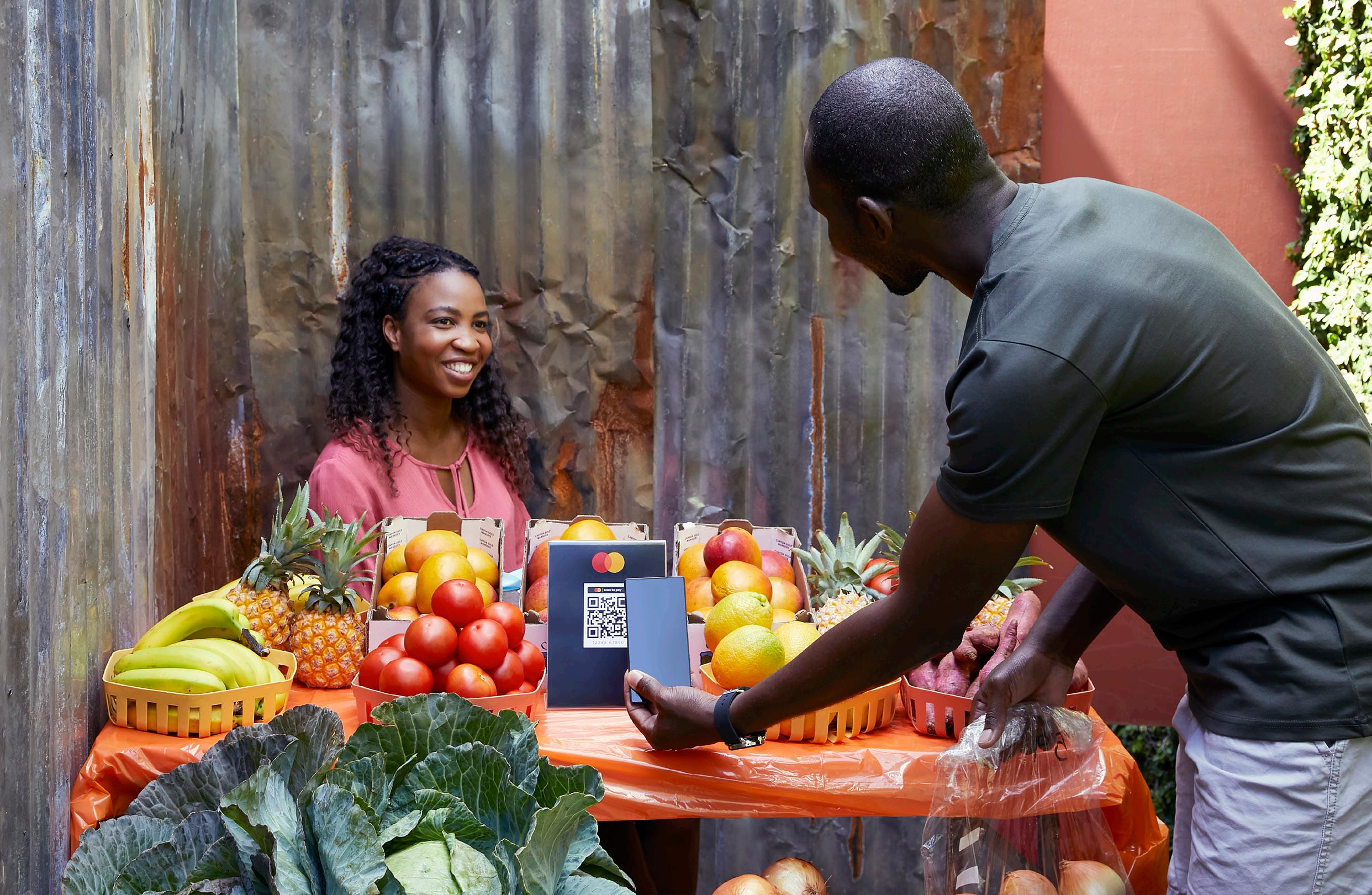
during the pandemic accelerated this shift. While small businesses traditionally lagged larger ones in omni-channel presence, the trend of shopping from home, and the need for touch-free payments in-store ignited a need for them to accept digital payments.
For example, when we realised that the most urgent need of SMEs in South Africa was to start selling online using e-commerce without having access to tools or knowledge, our collaboration with Standard Bank resulted in a solution that helps businesses move online and accept
For microbusinesses that largely operate in the cash economy, Mastercard
(QR)
provides
simple and more affordable solution to accept digital payments.
digital payments. The online solution involves having a dedicated website in a matter of minutes, receiving orders, accepting payments, and finding a delivery partner.
New technologies like Mastercard’s Tap on Phone, which turns an Android phone into a contactless acceptance device, is further helping small businesses to adapt. For microbusinesses that largely operate in the cash economy, Mastercard Quick Response (QR) code technology provides a simple and more affordable solution to accept card payments than traditional POS devices for both online and face-toface transactions.
Access to credit is also a major pain point in Sub-Saharan Africa, with SMEs facing a massive finance gap of US$330 billion, according to the World Bank. In Kenya, a partnership with consumer goods company Unilever and KCB Bank helped resolve the need for financing. Called Jaza Duka, Swahili for ‘fill up your store’, the program connects the dots between the small retailer, which has been procuring and selling little shampoo sachets for years, and the bank. The distributor who sells to the store owner becomes the data intermediary, making it possible for the storeowner to get credit from the formal rather than the informal system at one-tenth the cost. We also teamed up with Kasha, the purpose driven digital retail and distribution platform, to include an additional 5,000 micro, small and medium enterprises into the program.
Kasha has a long legacy of collaboration with Mastercard, having joined our Start Path engagement programme in 2019, which invites later stage fintech start-ups to participate in a rigorous six-month engagement programme, benefit from mentorship and the get introduced to our broad network of partners around the world. Over 300 companies globally have come through this programme, and we’ve seen stars from South Africa, Nigeria, Kenya, and Rwanda excel in driving financial inclusion.
Another of those African Start Path companies is Hello Tractor. It connects tractor owners to farmers through an Internet of Thingsenabled digital solution that bridges the gap between manual and mechanized farming. This gives smallholder farmers easier access to affordable tractor services and equipment rental, so they can plant on time and increase yields.
In Sub-Saharan Africa over 60% of the population are smallholder farmers. Economic growth from agriculture in Africa is four times more effective at reducing extreme poverty than any other sector. Inclusion in agriculture is a fantastic place to make an impact.
Yet farmers face significant challenges, including limited access to markets, access to working capital to secure quality seeds and pesticides, and access to relevant financial tools to pay and get paid efficiently.
To help smallholder farmers overcome these challenges and transition from subsistence to commercial farming, Mastercard launched a digital platform in 2015 called Farm Pass, bringing together various agri-sector stakeholders from the supply and demand sides in one agricultural marketplace. Smallholder farmers can sell their produce at a better price, access quality inputs and farming information, get paid and pay digitally and develop a financial profile that can unlock financing opportunities for working capital and inputs.
Across Africa, Farm Pass has already helped nearly 1 million smallholder farmers access better prices. It is transforming agricultural ecosystems and connecting farmers to the formal financial system, also providing them with a digital record that could support future loan applications. During the pandemic, farmers were able to sell produce at 25%-50% higher prices by connecting directly with buyers in Farm Pass, even though local markets were closed.
Soon, more farmers will discover its benefits because of the partnership
between Mastercard and Ecobank Group, which will see Farm Pass rolled out to 33 countries across Sub-Saharan Africa, growing the solution’s footprint beyond Uganda, Kenya, and Tanzania where it is currently live. And as more farmers move from subsistence to commercial farming, it will in turn stimulate agricultural growth, increase competitiveness, and improve food security in Africa – which has also experienced the knock-on effects of disrupted supply chains due to the Ukraine crisis.

These solutions, which help create new connections, truly showcase ‘tech for good’. And the efforts are recognised. It’s been wonderful to see Mastercard awarded ‘Best Financial Inclusion Services Provider’ at the recent Digital Banker Awards – for two markets, namely Kenya and South Africa. Mastercard’s goal is to build a connected digital economy that is secure, sustainable, financially
inclusive, and works for everyone. Such ecosystems are built as a concerted effort undertaken by private and public stakeholders. We are excited to continue collaborating with like-minded partners, in and beyond payments. By applying our expertise, insights and solutions to forge pioneering and scalable commercial models across sectors and industries – so we can enable a bright and more financially inclusive future for all.
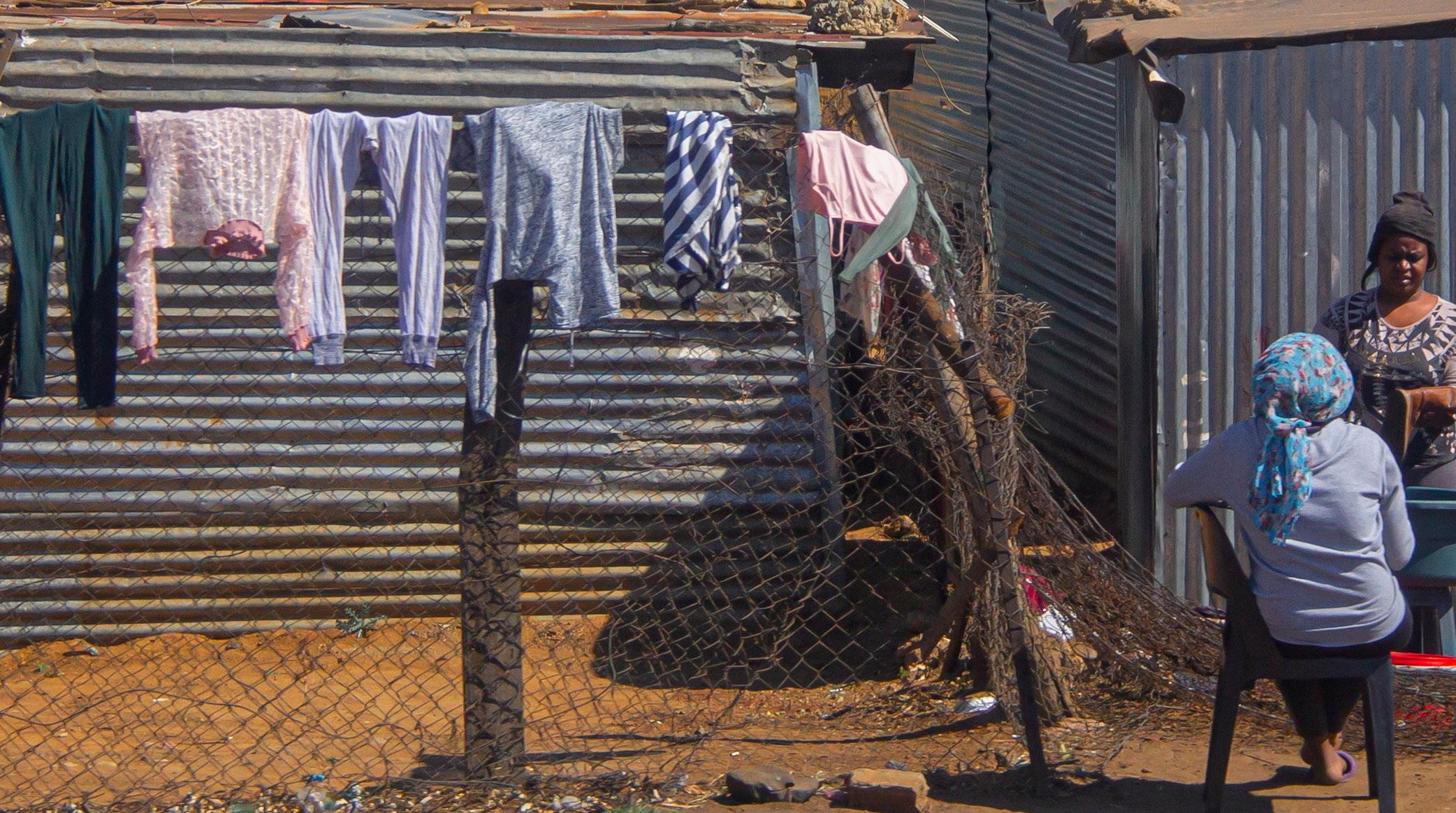
Financial inclusion is severely skewed in South Africa, with higher income groups having more access to a range of financial services such as bank and savings accounts, loans, and insurance products. Those who are financially excluded have more difficulty accumulating wealth – further deepening this divide. But there are ways of overcoming this serious problem according to Zunaid Miya, MD of Local fintech company, Hello Pay.
Some are excluded by circumstance. Undocumented migrants are excluded by regulations such as FICA, while bigger financial institutions don’t accept asylum documents or foreign passports.
Others are excluded by choice. Some don’t want to be part of the formal banking system; others have a bad credit record and believe
Zunaid Miya Managing Director HelloPay
bank accounts can be drained by creditors; others believe they wouldn’t qualify for financial products and so they never apply.
The perils of financial exclusion are not just fewer opportunities
for personal and business growth but also increased risk. People who don’t have insurance, for example, expose themselves to both financial and physical risk. At its worst, then, it impacts health and longevity. Even at its best, it’s simply greatly inefficient – not having banking products means dealing with physical cash, which is cumbersome and tedious.
Integrate the informal economy. Financial institutions need to acknowledge that a large portion of the South African economy is made up of informal trade. Without circumventing regulatory requirements, there needs to be a framework put in place that considers the circumstances of individuals and businesses in the informal space. These businesses need to be given the opportunity to be included in the formal financial system in a simple, easyto-understand, and convenient manner.

That means education and awareness. Financial institutions need to embark on marketing campaigns that inform individuals and businesses in this informal
space of the financial products and services available to them.
In many cases, people simply assume that these products are reserved for higher income individuals and formalised businesses, when that’s not the case.
We need to reframe debt as a society and enable individuals, small businesses and micro enterprises that have an entrepreneurial flair and the ability to grow to access funding and other financial services. This agenda needs to be driven in the underbanked or unbanked space especially.
Make compliance less onerous. Compliance requirements are a hurdle for consumers and SMEs. When faced with reams of paperwork and seemingly endless documents that need to be submitted, compounded by digital illiteracy, many are deterred.
Reframe the ‘debt trap’. There are different kinds of debt and, again, that education is lacking. Bad debt favours consumption. Good debt enables production. When an SME borrows money to build assets, that creates wealth and job opportunities –enriching the economy at large. Consumer lending, however, is not asset-driven and incomegenerating – and often ends in a debt trap where the borrower is exploited by micro lenders.
Application processes need to be simplified so that applicants can be onboarded quickly and easily, in turn improving access to financial services and products. At HelloPay and the Hello Group, we support our customers in overcoming these challenges by providing a simple-to-use digital transaction platform. Furthermore, we have a ground force of salespeople and agents across the country. They drive out to customers and start the onboarding process, collect documentation, and help them meet compliance requirements. Though financial exclusion is a multi-faceted problem that won’t be solved overnight, these steps would serve to start bridging that divide. And in the most unequal country in the world, the time to act is now.
How then, do we start bridging this divide?
The data economy has mostly existed in the shadows and companies have considered data to be their property and a proprietary secret even though the data didn’t originate from them. Now, the digital economy is growing and with it, data and digital tools are taking an even larger role in all aspects of our lives. This means that more diverse actors have access to and can use our personal information, which could leave us vulnerable to phishing scams and identity theft.
Let’s take a step back and ask ourselves, in this digital era, what does data privacy mean? Data privacy focuses on your rights as an individual; your right to decide the purpose of the collection of your personal information,

 Nolwazi Hlophe
Nolwazi Hlophe
its processing, how it is shared, archived and when/if you want your information deleted. Data is the
pulse of the digital era, making data privacy incredibly important.
In the old data economy, data could be harvested from our personal devices, along with our trail of electronic transactions and data from other sources and this caused significant consumer mistrust, competition for consumers and catalysed government action. The new rules in the data economy have now brought us to a world of data privacy and protection legislatures derived from the basic principle that personal information is an asset held by the people who generate it 2 .
Why does data privacy and protection matter? Well designed and effectively enforced data privacy and protection laws and regulations are the foundations to building trust in digital tools and systems by formally establishing rights that protect consumers against the exploitation of their personal information
and responsibilities that entail institutions to use consumer information in a fair, transparent and accountable manner3
Theoretically, one can postulate that with greater trust, consumers will be more accepting of services that rely on information/data sharing and use, which is a necessary condition to fuel a country’s digital transformation.
What is the relationship between data privacy, protection and security? Data privacy has already been defined, now let’s look at the definitions of the latter; data protection is a “set of procedures aimed at safeguarding personal information/data stored within a system. Data protection addresses data management, availability, and unauthorised access prevention.”4
Data security refers to measures taken to protect the integrity of the personal information/data
itself against any form of malware, manipulation and cyber threats.
Data security provides defence from internal and external risks.
Two key specific objectives of The Digital Transformation Strategy for Africa (2020 –2030)’s 5 are:
“Entry into force of the African Union convention on Cyber Security and Personal Data Protection by 2020 and for all Members States to adopt a complete set of legislation covering eTransactions, Personal Data Protection and Privacy, Cybercrime and Consumer Protection;
Create awareness and counterbalance issues of Cyber Security and Personal Data Protection and Privacy;”
So, let’s take a look at the landscape of the data privacy and protection legislature in Africa as shown in Figure 1; 61% of African states have adopted Data Protection and Privacy legislation6 . However, to meet the theoretical postulation towards digital transformation as mapped out in The Digital Transformation Strategy for Africa, data protection and privacy laws need to be context specific and effectively and consistently enforced. Poorly designed or inadequately enforced data protection and privacy laws can be a barrier to economic development through the following three channels: under-regulation, over-regulation, regulating the wrong things the wrong way.
Additionally, Figure 1 illustrates that almost 75% of African states have adopted Cybercrime legislation7 , which is great progress considering the in The Digital Transformation Strategy for Africa. So, why am I discussing three different terms that have different purposes? Data privacy, data protection and data security legislation functioning in harmony are an ecosystem that is essential to digital transformation for economic development.
How can low-to-middle income economies develop future-proof data regulations? Some considerations for inclusive future-proof data regulations include:
Promoting a common, transparent and flexible approach to establish trust with consumers; Incorporation of the 7 foundational principles of privacy by design8 in regulations development; Devote more resources to build the required skills and capacity that is significantly lacking in the field in low-to-middle income economies. Recently, the World Bank launched a Trust Fund on Cybersecurity and one of its aims is to offer comprehensive capacity development9
As we enjoy the exponential technological innovations that are moving us towards a digital world, let’s not forget that we are humans and that privacy is our right, but with transparency we can work together towards not protecting each other and not just seeing each other as information to be used as that will be our downfall.
1 The opinions expressed within the content are solely the author’s and do not reflect the opinions and beliefs of Digital Frontiers.
2 HBR (2022), The New Rule of Data Privacy, available here.
3 Centre for Global Development (2021), Why Data Protection Matters for Development: The Case for Strengthening Inclusion and Regulatory Capacity, available here.
4 Forbes (2020), Why Data Protection and Cybersecurity Can’t Be Separate Functions, available here.
5 African Union (2020), The Digital Transformation Strategy for Africa (2020-2030), available here.
6 UNCTAD (2022), Data Protection and Privacy Legislation Worldwide, available here.
7 UNCTAD (2022), Cybercrime Legislation Worldwide, available here.
8 IAPP (2006), Privacy by Design – The 7 Foundational Principles, available here.
9 World Bank (2022), Cybersecurity Multi-Donor Trust Fund, available here
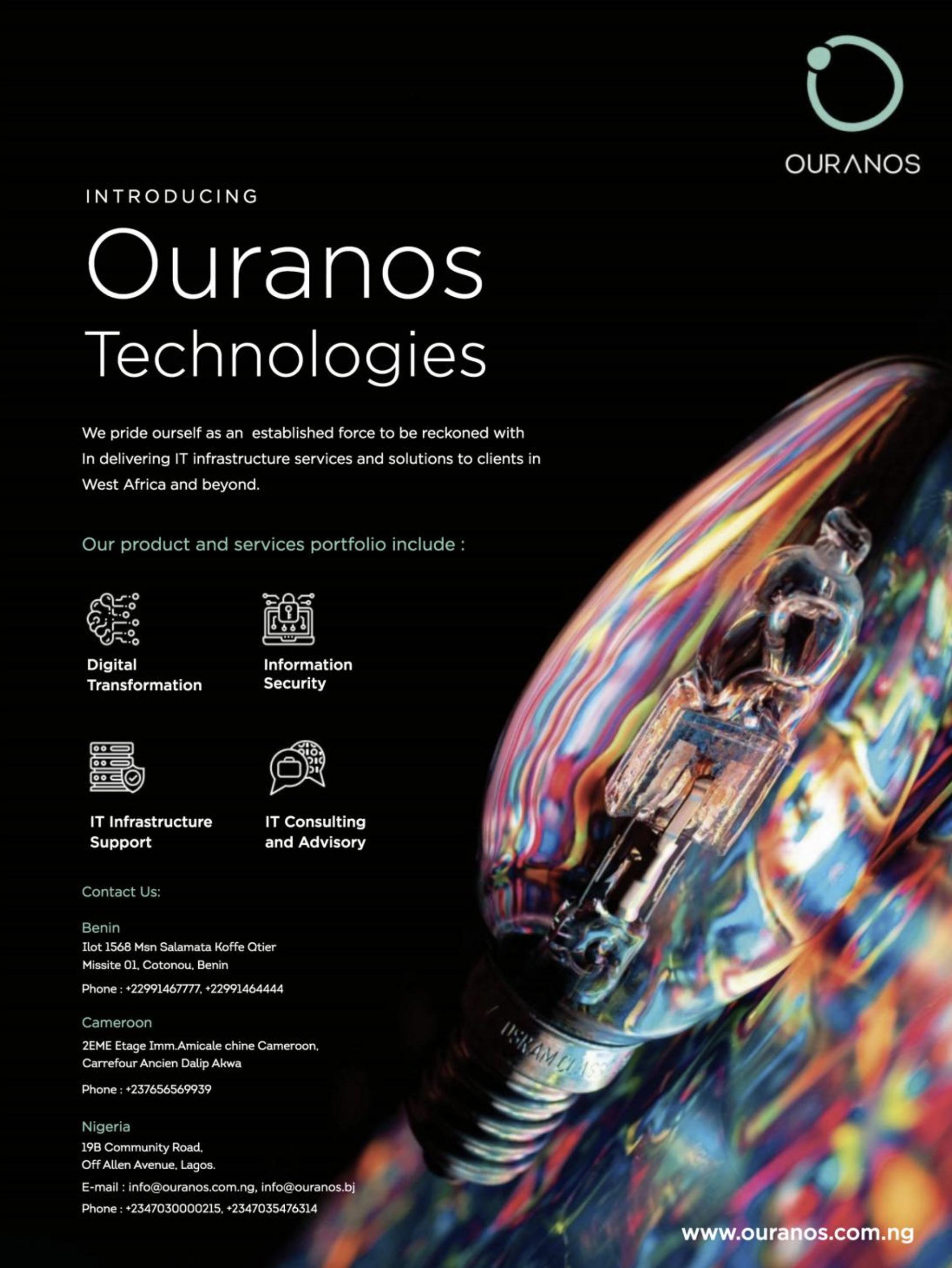









It’s universally acknowledged that the shift to digital banking has proceeded at a swift pace, a pace mainly generated by the interruption to traditional banking methods during the global pandemic.In 2022 it was encouraging to notice that the banking world continued making giant strides toward progress with remarkable advancement in digital banking across the African continent and globally. In a world that has never before been more connected, the need for innovative apps to support customers has never been greater

It gives us great pleasure to recognise the innovative winners of the Digital Banking Africa awards for 2022. Technological evolution evokes a shift in how we bank. Thus, the Digital Banker Africa awards seek to put a spotlight on organisations that are leveraging technological innovation to drive financial inclusion.
As a digitally innate generation starts to take the wheels, the traditional banking industry has grown to meet the world’s new challenges. Digital banking is the art of moving all conventional in-person banking activities online. It allows customers to join a bank and carry out all banking activities without setting foot in a bank’s physical offices.

Some of the advances that have enabled banks to meet the customer’s needs via online banking include a progressively digitised workforce where most tasks are automated, chatbots providing 24/7 customer service, growth of digital payments, and the ability to niche down to provide certain services to particular groups. Key improvements also include artificial intelligence and blockchain, as well as giving digital experiences a “human face.” Banks seeking to grow their digital offerings focus on maintaining excellent customer service while developing their technological knowhow.
The organisations selected for honours in the Digital Banker Africa awards 2022 have distinguished themselves from the competition with remarkable transformation in development, infrastructure, and innovative technology, all in favour of their customers.
The judging panel for the Digital Banker Africa awards has more than 110 years of business and financial journalism experience. The panel is supported by a group of researchers who have ensured that award winners in each category are the most worthy.
Africa
Best Digital Financial Services –
Mastercard
East Africa
Most Innovative RegTech Solution
Provider - Global Voice Group
West Africa
Most Innovative RegTech Solution
Provider - VerifyMe
Gambia
Best Digital Bank - Guaranty Trust Bank
Best Mobile Banking App - Eco Bank (Gambia)
Best Financial Inclusion Service
Provider - Access Bank Gambia
Best New Digital Bank - Bloom Bank
Gambia Ghana
Best Digital Bank - Republic Bank Ghana
Best Mobile Banking App - Standard
Chartered Bank Ghana PLC
Best Financial Inclusion Service
Provider - Zenith Bank Ghana
Best Financial Inclusion Service
Provider - Sierra Leone Commercial Bank (SLCB)
South Africa
Best Digital Bank - Capitec
Best Mobile Banking App - First National Bank (FNB)
Best Financial Inclusion Service
Provider - MasterCard
Tanzania
Best Digital Bank - CRDB Bank
Best Mobile Banking App - Sim Bank
South Africa
Most Innovative RegTech Solution
Provider - ThisIsMe
North Africa
Most Innovative RegTech Solution

Provider - Jumio
Angola
Best Digital Bank - Banco Millennium Atlantico
Best Mobile Banking App - Banco Millennium Atlantico




Botswana
Best Digital Bank - Standard chartered Bank (Botswana)
Best Mobile Banking App - Standard chartered Bank (Botswana)
Best Financial Inclusion Services
Provider - Absa Bank Botswana
Cameroon
Best Digital Bank - SCB Cameroun
Kenya
Best Digital Bank - Sidian Bank
Best Mobile Banking App - Standard Chartered Bank Kenya
Best Financial Inclusion Service
Provider - MasterCard
Best Digital Transformation - SBM Bank
Kenya Morocco
Best Digital Bank - Attijariwafa Bank
Best Mobile Banking App - CIH Bank Mozambique
Best Digital Bank - Millennium BIM
Best Mobile Banking App - Absa Bank
Best Financial Inclusion Service
Provider - NMB Bank
Best Digital TransformationUnited Bank for Africa
Tunisia
Best Digital Bank - Bank ABC Tunisia
Best Mobile Banking AppUnion Internationale de Banques
Best Digital TransformationArab Tunisian Bank Uganda
Best Digital Bank - Standard Chartered Uganda
Best Mobile Banking App - HFB Mobile Banking App Zambia
Best Digital Bank - Atlas Mara
Best Mobile Banking App - AB Bank Zambia (eTumba)
Nigeria
Best Digital Bank - Access Bank PLC
Best Mobile Banking AppAccess Bank PLC
Best Financial Inclusion Service
Provider - First Bank Nigeria
Best New Digital Bank - Stellas Bank

Sierra Leone
Egypt
Best Digital Bank - Arab BankBest Mobile Banking App - ABK-Egypt
Best Digital Bank - Ecobank
Best Mobile Banking AppUBA Sierra Leone
Zimbabwe
Best Digital Bank - Stanbic Bank
Best Mobile Banking App - FBC Bank
Best Digital TransformationZB Financial Holdings
Cryptocurrency and blockchain technology transformed ways to deal with banking and finance. New modes of money transfers and fund payments emerged. While cryptocurrency is often criticised for its price volatility, deeming it inappropriate for the common masses, the solution comes with another form of digital currency. These are similar to cryptocurrencies, yet regulated by the central authority.

As the name suggests, Central Bank Digital Currencies, CBDCs, are digital currencies similar to cryptocurrency, however, issued and controlled by the country’s highest monetary regulatory authority or the central bank. CBDCs are tied to the country’s fiat currency.
Fiat currencies such as the US dollar or Euro are government-issued legal tenders that are accepted for the exchange of goods and commodities. These fiat currencies mostly exist as banknotes and coins. The evolution of blockchain and cryptocurrency paved the way for cashless societies and digital currencies. While most countries use the physical form of fiat currency, the covid-19 pandemic resulted in the emergence of digital versions of fiat currencies in some countries.
CBDCs address several major challenges. For instance, it makes cross-border payments easier. In addition, while cryptocurrencies are unstable and their price fluctuations could cause worries to the consumers and common masses, CBDCs are managed and controlled by the nation’s central bank, thus ensuring minimum price volatility of the currencies. Most importantly, CBDCs foster financial inclusion as they provide
a means to offer banking and financial services to the unbanked and underbanked.
banks adopting CBDCs, the issue of remittances would be resolved and they can be done in an easier, cheaper, and faster manner.
There are multiple initiatives towards adopting CBDCs in regions of South Africa. With Nigeria introducing the e-Naira, more Sub-Saharan African banks are exploring the options of CBDCs.
These CBDCs offer multiple advantages. Research suggests that financial inclusion is a serious concern in South Africa, where roughly 23.5% of the people are out of the system and nearly $1.04 billion in cash is believed to be held outside the banks. There’s a lot of inequity in wealth distribution across African nations. These facts necessitate financial inclusion, which is making affordable and genuine financial and banking services available to people. That said, CBDCs are a fundamental way to inculcate financial inclusion.
These currencies avoid the need for opening bank accounts, getting approvals from authorities for loan sanctioning, and such, which could otherwise deprive people of the services due to a lack of access to banks. Besides, in remote areas with limited internet access, digital transactions can be carried out with simpler versions of phones. In addition, the average cost of sending and receiving money is just under 8 percent in SubSaharan Africa, which makes remittances difficult. With African
In August 2021, Ghana moved forward with its implementation of the “Digital Ghana Agenda,” a project that started with the support of its technology partner G+D. The objective of the project was to digitise government services, including e-Cedi, in its pilot program that aims at reducing physical cash and utilising digital currency to ensure secure payments.
The project is divided into three phases - design, implementation, and pilot. The pilot phase involves testing with diverse demographic groups and devices like mobiles and smartphones. The primary goal of the Ghana Pilot project was to explore the aspects of user experiences, legal aspects, security, and impact on monetary policy, in addition to focusing on bringing financial inclusion.
In May 2021, South Africa started its Pilot program to explore if CBDCs would be feasible and appropriate to be issued by SARB for retail purposes. Other initiatives include Project Dunbar which involves SARB along with the Reserve Bank of Australia, Bank Negara Malaysia, and the Monetary Authority of Singapore testing the applications of CBDC for cross-

border payments on a common platform. In addition, the South Africa Reserve Bank is also testing a wholesale CBDC, which will be used only by financial institutions for interbank transfers. Besides, this is a part of the second phase of the project Khokha.

While Nigeria enthusiastically forayed into introducing the digital currency e-Naira, the adoption tendency from the masses is
sluggish. On the whole, e-Naira is still not very common in Nigeria, with only 700,000 customers creating e-Naira wallets since its launch last year. A probable reason could be the reluctant mindsets of the common masses to adapt to a new form of finance.
The Central Bank had made a separate channel for customers without bank accounts to open e-Naira wallets. Banks are cooperating from their end to support digital currency adoption, despite their concerns about revenue losses.
The use of CBDCs in emerging markets like Africa is increasing. As these economies portray the concern of financial inclusion, CBDCs offer a viable solution.
However, certain factors include fears that allay the minds of people as to how these digital currencies will evolve and perform in the future, and that scepticism is a major deterrent to the rapid adoption.
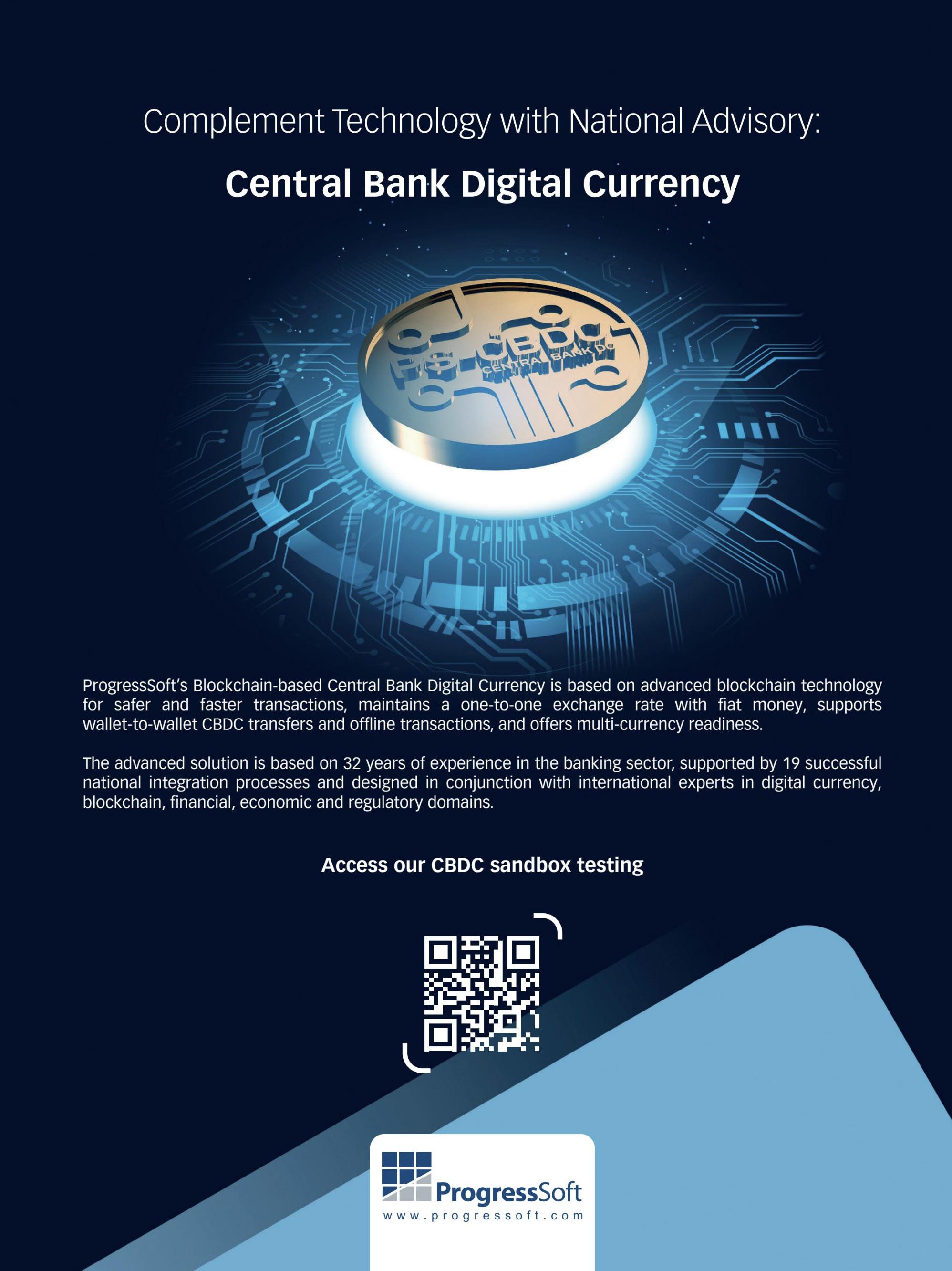

Over a decade ago, the idea of an instant lending product in Nigeria was a dream most people thought unrealistic to pursue. The average time it took to process a personal loan was up to three weeks and sometimes even longer as was the time it took to validate a customer or underwrite a loan using manual processes which were prevalent in the banking industry at the time.
As a result of their limited resources, Commercial Banks in Nigeria prioritised creating high ticket loans for corporates and high net worth individuals over micro loans for individuals and small businesses since it took similar time and resources to process both the high- and low-ticket loans.
The high inflationary environment combined with flattish growth in household disposable income in the country continued to set the stage for a massive credit boom waiting to be exploited though there was no way to take advantage of such opportunity at the time, especially by using manual processes.
Chukwuma Nwanze Managing Director (Designate) Credit Direct Limited
Without doubt there was a need for answers on why no one was able to take advantage of the credit opportunity. How can such a large opportunity exist without a solution that encourages scale in a sustainable and efficient way? The Central Bank of Nigeria attempted to solve this in 2005 through
the creation of Microfinance Banks as it attempted to encourage financial inclusion and the proliferation of credit in Nigeria. Microfinance Banks were expected to make access to credit available for individuals as well as Micro, Small and Medium Enterprises but with similar processes to that of Commercial Banks, the Microfinance Banks though successful in providing basic banking services to micro and small businesses made very little in-roads in driving credit penetration across the country.
In the last few years, this narrative has changed as the technology required to encourage access to
affordable and relevant financial products especially in the areas of payments, transactions, savings, insurance and credit are now readily available to financial service providers thanks to the influx of innovative FinTechs in Nigeria over the past decade
The following are some of the ways digital technology has in the last few years reshaped the lending ecosystem in Nigeria.
According to data collated from the Nigerian Communications Commission (NCC), there were about 2.3 million registered phone lines in the country in 2002. This represented a mobile phone penetration of 2% in Nigeria. Over the next 5 years, the number of mobile phones in the country reached 42 million phones in 2007, representing almost 20 times growth in just a short time as the cost of sim cards and phones became more affordable for the average Nigerian. By the end of 2007, the mobile phone penetration in Nigeria had jumped to 29%. 2007 is considered
as the year smartphones went mainstream and the true internet experience could be enjoyed by phone users in a similar manner that was obtainable using computers. Between 2007 and 2022, registered phone lines had grown from 42 million in 2007 to 209 million, representing 98% mobile phone penetration in the country. Today, virtually everyone can be reached by a mobile phone. Smart phones have helped to connect the world in ways never thought possible.
Out of the 209 million phones in Nigeria as of August 2022, about 152 million mobile phones were connected to the internet, giving users unlimited possibilities to accessing any type of digital offering available through the internet. With internet accessibility for almost every adult and the ability for lenders to create and activate their digital channels, the process of digitising loan applications was solved. This means that anyone, anywhere with a loan need can with a push of a new button request for a loan and this request will automatically hit the digital lending system of the loan providers.
Smartphones will not be considered “smart” without providing their users access to the internet. There was the need for access to affordable internet to as many adults as possible, thereby making digital interactions between applicants and lenders possible on a large scale. This was achieved
by the success of the telcos in providing affordable high speed internet data bundle to Nigerians
In the past, loan applications required processes like filling a form, physical address verification, and physical customer identification. However, with the introduction of the Bank Verification Number (BVN) by the Central Bank of Nigeria (CBN), which assigns a unique number of every banked customer in the country for easy identification, the process of customer onboarding became simpler and easier for lenders to verify a customer’s identity at the point of making a loan request. This digital process of verification and documentation was acceptable to regulators which made things a lot easier for lenders and allowed for more innovation around customer onboarding. Without doubt, this has significantly helped in transforming the lending industry in the last few years with millions of Nigerians now having access to credit in minutes. Several digital identity verification companies have sprung up in recent years, helping to increase service accessibility and encourage innovation amongst competitors to the benefit of lenders and their customers alike.

Simply put, an API allows two independent systems to talk to each other easily. And as simple as it sounds, it has created a world of difference to the lending ecosystem in Nigeria. For example, the ability for lenders to digitally request for a credit report on a loan applicant from the Credit Bureau or request for the customer’s bank statement from the bank without any physical visitation completely transformed the underwriting process for lenders. Reports which would have been obtained in physical form days after making the request were now available in digital form barely seconds after an API request. Smart lenders began to build algorithms that could analyse the bank statement and credit reports in seconds and provide instant recommendations to the credit analyst on whether to accept or reject the customer based on his or her credit score.
From the credit reports, bank statements and other data points that help provide guidance on the credit worthiness of an applicant being manually reviewed by credit analysts, this process is now increasingly being digitised as the underwriter’s decisioning process is now being replaced by lending algorithms and machine learning decisioning. API Integrations have also fostered partnerships between organisations in the
lending value chain. For example, embedded finance offerings are made available to millions of customers today as a result of the seamlessness of two independent systems being able to talk to each other today for the purpose of achieving a defined objective.
In the past, the process of loan disbursement was manually done by the lenders and most borrowers were required to submit post dated cheques as a means of repayment of loans. Today, loans are disbursed instantly once the customer accepts the loan offer from the lending institution through the digital channel. With the help of successful payment infrastructure readily available in the Country, the loan repayment process can be automatically set on a customer’s bank account once he accepts the loan offer.
Over the last decade, the entire lending value chain from loan origination to loan repayment has now been fully automated, enabling lending companies today do what was previously thought impossible. The impact of digital technology in reshaping the lending ecosystem cannot be overemphasised. Millions of Nigerians are now getting banked from the comfort of their homes, millions of first-time borrowers are now able to access loans in seconds and operational efficiency
in the lending industry has been transformed in ways no one would have believed just a few years ago. Today, opportunities to do things differently for all lenders is limitless if they can properly leverage the power of data, technology, and partnerships. The winner of tomorrow’s lending industry will be determined by how well they manage their digital transformation journey today
Chukwuma Nwanze is an experienced board member, transformational leader, versatile and well rounded business, and financial manager with over 19 years’ experience in Financial Control, Consumer Finance, Strategy Formulation and Planning, Business Process Development, People and Performance Management and Systems Development and Integration.
Over the last 19 years, Chukwuma has operated as a Chief Financial Officer (CFO) for 6 different organisations spanning across Consumer Lending, Consulting, Oil and Gas and Financial Technology markets.
He currently serves as the Managing Director (Designate) of Credit Direct Limited, Nigeria’s premier consumer lending finance company. Since joining the company in 2012, Chukwuma has helped the firm in consolidating its market share within the industry and strengthening its financial position.

The embedded finance market is expected to grow to tenfold its 2020-value by 2025 – just three years from now. The term has been generating buzz and changing the financial services landscape by improving access and lowering costs. But it’s not quite as new as many people think. Long before the term was even coined, Ukheshe’s Eclipse API made it possible for SMEs to offer their clients financial services. Today, their offering has grown exponentially to become a market leader in emerging markets. One of the needs the company identified was for an SMME focused digital platform in 2018 to improve and address financial inclusion in South Africa. Banks are increasingly relying on fintechs to help provide innovative solutions to their customers and overcome the challenges of legacy systems which can delay bringing new technology to the market scale. We saw the need for a platform that could not only provide innovative solutions at a quicker development rate but through a single integration

 Coertzen
Coertzen
– which was not common at that stage.
Eclipse was then born. Ukheshe’s unique API provided embedded finance before the term existed, offering non-financial companies ways to integrate payments, transactions, transfers and other digital solutions into their businesses in a seamless way, without the associated development and compliance costs.
Today, Eclipse is far ahead of the competition. It provides the opportunity for customers to easily integrate and plug and play
into any one of the many Eclipse solutions that can be implemented across several different channels. In addition, once customers integrate into Eclipse, the sky’s the limit and additional functionality can be added at a later stage.
This is exactly what makes embedded finance such a gamechanger. It reduces barriers to entry for various products and services. Embedded finance allows for greater collaboration and partnerships and that, in turn, grows the economy or opens up opportunities to embed financial products into multiple different markets. Until recently, if a business wanted to offer financial services, they had to create a fintech division within their organisation or register as an FSP. The entire process is lengthy and requires a huge amount of investment to build. Embedded finance infrastructure hugely reduces that entry barrier to offer financial services.
The embedded finance market is expected to exceed USD$7 trillion in the next ten years, making it worth double the combined value of the world’s top 30 banks today. The demand for integrated experiences is one of the most significant trends driving the embedded finance market forward. Customers are flocking towards multi-product ecosystems. They want seamless experiences and the ability to do everything on a single platform, safely – from accessing, managing and storing their money to
transacting and offering their own clients the ability to do the same. It is, quite simply, revolutionising the financial services industry.
Eclipse provides exactly that –embedded finance that has the customer at the heart of every solution, at lower costs and with less hassle, all through a single platform. Many APIs only provide one set of APIs per fintech proposition, whereas Eclipse provides a number of RESTful APIs. Our clients only have to integrate once and can then access a number of services and build their offering to their own clients from there, broadening their proposition where and when they need to. This allows them to start small and scale very quickly.
This opens up new revenue opportunities to users such as the ability to capitalise on cross-selling opportunities in various markets, digital KYC and onboarding, and the opportunity to access issuing and acquiring services such as physical and virtual cards, QR and VAS – all within a single integration and location.
Embedded finance may be a new buzzword to some, but the benefits are already tangible – it makes true financial inclusion a reality.

The Covid pandemic saw virtual identity checks become the norm. But not all identity proofing methods are created equal – some of the mainstream options fall far short of best practice guidelines. By choosing the right methodology and technology, CIOs and security and risk leaders can build an authentication solution that maximises security and provides a frictionless customer experience.
In a world where data breaches occur every other day, there are thousands of terabytes of personal information in the hands of the wrong people, making identity spoofing one of the biggest security challenges today.
When it comes to onboarding customers signing up for new bank accounts, loan finance applications, or insurance policies, having secure ways of verifying applicants’ identities is critical. The old ways of conducting identity checks, which rely on the usual name, address, and ID number, can no longer be viewed as adequate given the amount of new account fraud that occurs via identity spoofing.
Leveraging stronger solutions that layer of risk and trust signals such as device ID, behavioural analytics, and location signals, security can be bolstered. However, even these methods do not always offer a sufficiently robust security response.

Solutions that rely on multiple data points like ID number, name, as well as behavioural data are more secure than solutions that only rely on a name, address and ID number, but they are still not sufficient. Creating a synthetic ID is so easy nowadays that anyone can learn how to do it online. The most secure approach to identity proofing relies on comparing a presented ID document against a government database. But in cases and countries where such databases don’t exist, the next best option would be what experts refer to as ‘document-centric identity proofing’, or the ID+selfie process. In this case, a picture of a photo ID document is compared with a selfie using liveness detection.
Says Gerhard Oosthuizen, Chief Technology Officer at Entersekt.This technology is also of particular relevance to organisations that don’t have access to central identity databases.
Its important not to be complacent about how fast nefarious groups can adapt to new technologies.
The reason why document-centric identity proofing is working so well is because it can rely on sophisticated technology to assist with the verification process and help protect against ID spoofing. We already have the iBeta ISO 30107-3 standard which prescribes the recommended methods to test biometric authentication and measure the effectiveness of liveness detection. This can be achieved in various ways, such as bouncing different coloured lights onto the person when taking the photo. Based on the feedback, the software can detect if the photo is of a living person. And, while some vendors will rely on AI to run the checks, many still have call centres where checks can be escalated to human assessors, adding an additional layer of verification,” he explains.
Gerhard Oosthuizen Cheif Technology Officer Entersekt
Using a selfie with an ID document is a self-contained system. By lifting the picture in the ID document and comparing it to the live picture of the selfie, relying on a central governmental database is not required. Since many countries don’t have such databases in place, it’s not surprising that this technology is getting real traction from many banks that are using the capability as part of their onboarding and recovery processes.
Companies can use identity proofing as a way to take their first real step towards a passwordless future, especially if it is part of an integrated authentication solution.
“It has become urgent for companies to employ a diverse range of risk and trust signals for functions like onboarding, credential recovery and adding new recipients. It’s a sad reality that bad actors are exceptionally good at adopting new technologies to separate us from our identities and funds, but for now, it remains difficult to socially engineer away my face.
The identity verification market is expected to grow from $8 billion in 2021 to reach $17.7 billion in 2026 with a compound annual growth rate (CAGR) of 17.1%, and identity proofing in particular is gaining popularity.
“Using ID + selfie identity for ID proofing is a great fallback authentication method and an initial establishment of truth, but we understand that companies don’t want to rely on this as their default authentication method, nor should they. For lower risk transactions and processes, we should be aiming towards a frictionless environment where advanced security happens in the background. Fortunately, with this built into Entersekt’s standard offering, companies can customise their risk settings as they need.
Entersekt is a leading provider of strong device identity and customer authentication software. Financial institutions and other large enterprises in countries across the globe rely on its multi-patented technology to communicate with their clients securely, protect them from fraud, and serve them convenient new experiences irrespective of the channel or device in use. They have repeatedly credited the Entersekt Secure Platform with helping to drive adoption, deepen engagement, and open opportunities for growth, all while meeting their compliance obligations with confidence.

Proof of life is not as hard as it once was
Interest is growing fast and it’s not surprising














The electronic commerce (e-commerce) market in South Africa has exploded and is expected to continue growing exponentially in the next few years. However, online retailers will not only have to refine their digital strategies, but they will also have to up their security measures.
South Africa is only the 41st
largest market for e-commerce with a revenue of $5 billion (R75 billion at average rate of $15) in 2021. It is expected to grow 8% annually between 2021 and 2025, surpassing the global average of 6%, according to ecommerceDB. Major global players have shown great interest in the South African market, notably the recent entry of Amazon – who also see this as a
gateway into Africa. We believe every single person will eventually have to be biometrically authenticated to be able to transact online. This is not only to protect them, but also the organisations they are transacting with. There is a huge increase in online fraud by dishonest customers as well as by organised crime syndicates.

regulations for e-commerce verification keeping up with the increase in transaction volumes. Added to this was the impact of Covid, which forced people to transact online.
Many of the large retail chains are compelled to increase their online footprint to remain competitive, and need a sophisticated digital strategy to compete with the likes of Amazon. Currently, the biggest player in the South African e-commerce market is takealot.com. The online store had a revenue of US$602 million in 2021. It is followed by superbalist.com and woolworths. co.za as the second and third largest stores with US$85 million and US$57 million, respectively. Estimates suggest that the top three stores account for only 15% of online revenue in South Africa.
Online security is still broadly considered to be in its infancy in South Africa and very few retail chains have strong identity authentication measures in place. The lack of sufficient knowledge about the person or organisation you are transacting with is a serious threat in e-commerce. The uptake in digital identity authentication has been quite slow relative to the exponential increase in online transactions.
The main reason behind this slow uptake is the lack of proper
The financial sector, however, has made giant leaps with the implementation of enterprisegrade remote digital biometric identity authentication solutions.
This is because of strict knowyour-customer (KYC) regulations to combat identity theft, money laundering and terrorist financing. It is only a matter of time before identity authentication will become more regulated in the retail space.
Some companies are gearing up already for stricter regulations by aggressively seeking out various authentication technologies and solutions. iiDENTIFii says account hijackings, identity fraud and data breaches continue to become more prevalent.
Account hijackings (also known as account takeover fraud) are when fraudsters or criminals pose as genuine customers to gain control of an account and then make unauthorised, fraudulent transactions. In the US alone reported cases increased by 90%, costing an estimated US$11.4 billion in 2021 compared with 2020. Around 22% of US adults have fallen prey to account takeover fraud scenarios.
Biometric face authentication helps organisations to prevent account takeover fraud. iiDENTIFii recently raised US$15 million (R272 million) in growth capital which will be used to fund the company’s expansion across Africa.
We’re excited to put the investment to work as we close in on our goal of authenticating every face in Africa. We confidently continue our mission of stopping identity theft in Africa.
The investment, led by African investment company Arise, validates the company’s central business thesis that it remains the preferred partner for enterprisegrade identity authentication in Africa. Other investors alongside Arise are private equity firm Sanari Capital and US tech entrepreneur Bill Spruill.
ABOUT IIDENTIFII
iiDENTIFii protects organisations and individuals against identity fraud. We are a proven enterprise-grade facial biometric authentication and automated onboarding platform. We verify an individual’s digital identity and authenticate their physical presence in an online world. Our technology meets governance and legislative requirements, and plugs seamlessly into existing infrastructures, including mobile and web-based platforms.
